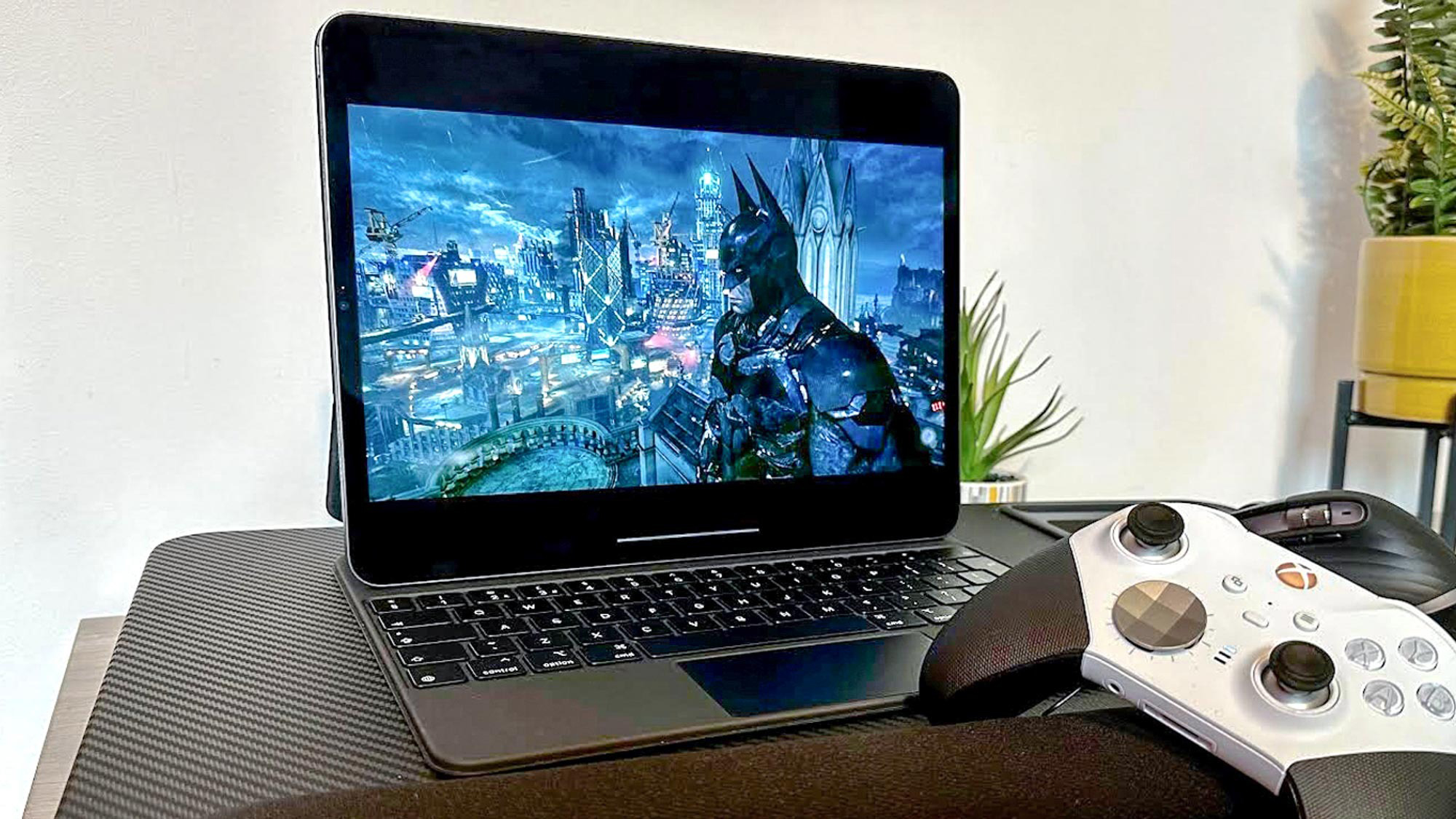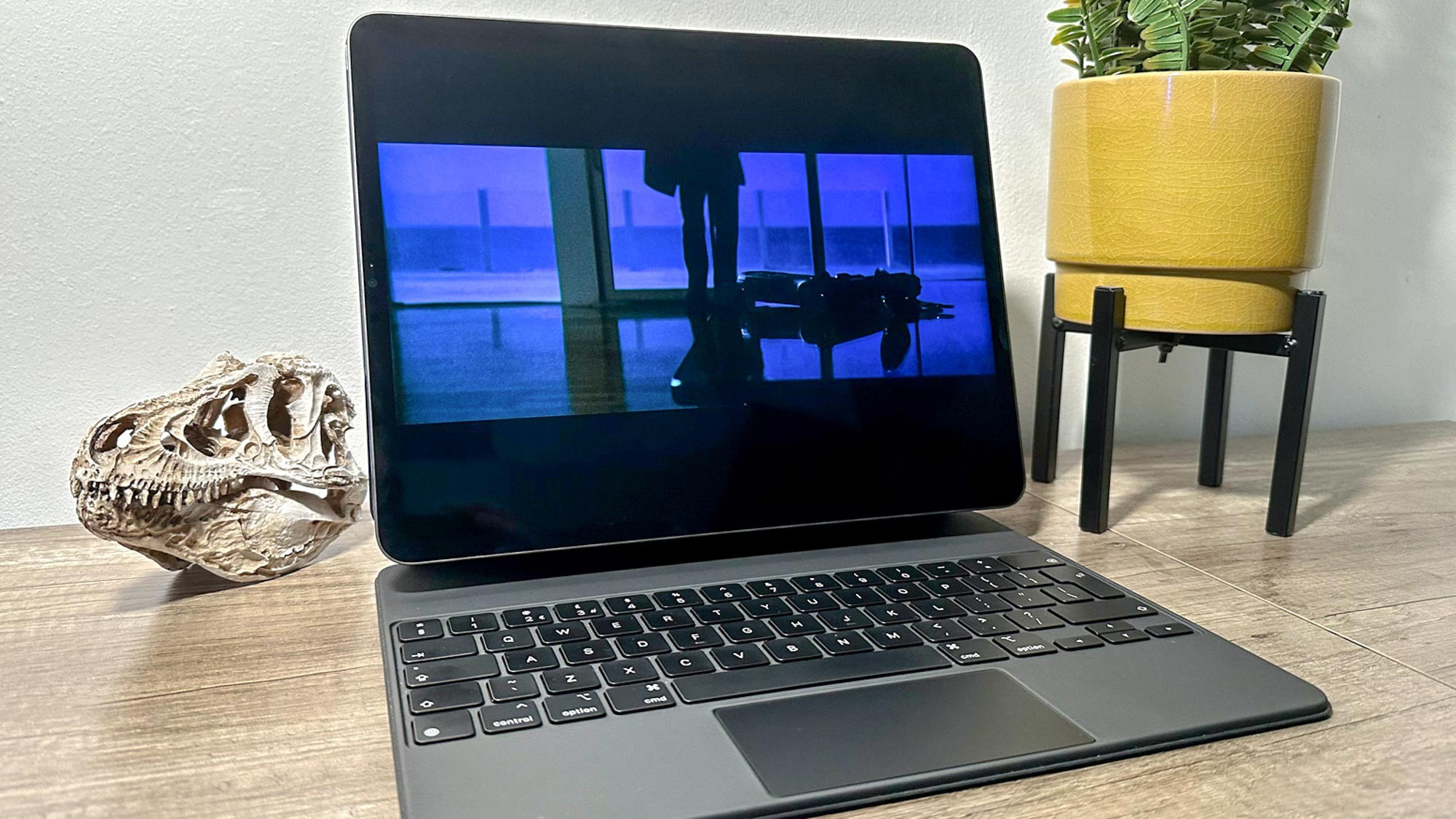I'm desperate for the new iPad Pro 2024 — and this upgrade is why

If recent online scuttlebutt proves to be on the money, the rumored new Apple iPad Pro 2024 could be getting the first major redesign the premium tablet lineup has seen in five years. As the owner of the still excellent iPad Pro 2021 model, my body (and wallet) are ready for an upgrade.
Recent iPad Pro 2024 rumors have pointed to the company’s latest large and in charge tablet receiving the much speculated Apple M3 chip, which is hardly surprising. Yet added processing power is not what’s getting me all hot and bothered about the prospect of the iPad Pro 2024. After all, my current iPad’s A13 Bionic CPU is more than capable of handling any task I throw at it… which normally involves having waaaaay too many Google Chrome tabs open at once.
No, what’s really getting my juices flowing for the rumored tablet is the idea of an iPad that finally, at long last packs in an OLED display.
I may have only been working for Tom’s Guide for a few short months, but during my brief tenure, I’m pretty sure I’ve written roughly 397 articles revolving around OLED technology in some form or fashion — don’t worry, you can trust my math. Probably.
I’m pretty sure I’ve written roughly 397 articles revolving around OLED technology in some form or fashion"
I’m obsessed with OLED screens. I bought my first ‘organic light-emitting diode’ 1080p television back in 2015, and ever since it’s been a tawdry, wallet-draining love affair I just can’t shake. Currently, I own one of the best OLED TVs in the LG C2 OLED, the excellent Alienware AW3423DWF QD-OLED gaming monitor and, more recently, I picked up an iPhone 14 Pro — sweet lord do I love that 48MP main camera.
In terms of embracing OLED, Apple’s smartphones have been leaving its tablets in the dust for years. 2017’s iPhone X was the first time Apple chose to embrace the tech for its iconic phone series, and having just recently sold mine, I can attest its Super Retina HD display holds up half a decade on.
Breaking Pad

The endless blacks and superior image uniformity OLED displays offer is something I’m desperate to see feature in the rumored iPad Pro 2024. And I say this as a consumer who adores his current iPad Pro.
Get instant access to breaking news, the hottest reviews, great deals and helpful tips.
Both the iPad Pro (2021) and iPad Pro (2022) feature the company’s legendary Liquid Retina XDR display, but away from company jargon, what we’re actually dealing with are mini-LED panels. Don’t get me wrong, as a technology, mini-LED has made real strides in the last few years. The screens on Apple’s last two Pro models feature over 2,500 local dimming zones, meaning they’re able to achieve black levels that are pretty close to OLED-quality.
There’s still a gap when it comes to the finest OLED displays and the best efforts mini-LED can muster, though.
While all those dimming zones help to reduce ugly screen defects like backlight bleed that still plague many LCD TVs and monitors, they occasionally exhibit a nasty issue referred to in the obsessive A/V community as ‘blooming’ or ‘halo effect’. Sadly, the latter doesn’t involve a certain seven-foot Spartan last seen in Halo Infinite.
Pro blow

To put it into simple terms, blooming is a screen defect where bright parts of an image start to bleed into darker sections of the picture, creating a sort of faint, luminous ring — hence the nickname ‘halo’.
On my 12.9-inch iPad Pro, the effect is pretty subtle. It’s something I only ever notice when watching dark content at night. The worst offenders are 16:9 aspect movies and their accompanying horizontal black bars that eat up precious screen real estate on my tablet’s 4:3 display. In this, pretty specific scenario, it’s quite easy to spot bright parts of a film scene bleed into and flicker across the aforementioned letterboxing bars.
Granted, this is a pretty minor issue that probably only annoys me about 5% of the time. I can’t deny it occasionally bugs me from time to time, though. If the iPad Pro 2024 does end up getting an OLED screen — and by 2027 almost all MacBooks could follow suit — it would instantly eliminate my minor grumblings surrounding mini-LED as a developing screen technology.
The less cheerier side of this OLED equation is that analysts are predicting the added production costs of making these new screens could see the price of the iPad Pro 2024 soar to $1,800.
As a diehard OLED advocate, I better start putting those pennies away.
More from Tom's Guide
- I didn’t fear burn-in on my OLED gaming monitor — until I got burned
- This is the must-have iPad Pro accessory
- The best OLED TVs you can buy right now

Dave is a computing editor at Tom’s Guide and covers everything from cutting edge laptops to ultrawide monitors. When he’s not worrying about dead pixels, Dave enjoys regularly rebuilding his PC for absolutely no reason at all. In a previous life, he worked as a video game journalist for 15 years, with bylines across GamesRadar+, PC Gamer and TechRadar. Despite owning a graphics card that costs roughly the same as your average used car, he still enjoys gaming on the go and is regularly glued to his Switch. Away from tech, most of Dave’s time is taken up by walking his husky, buying new TVs at an embarrassing rate and obsessing over his beloved Arsenal.
